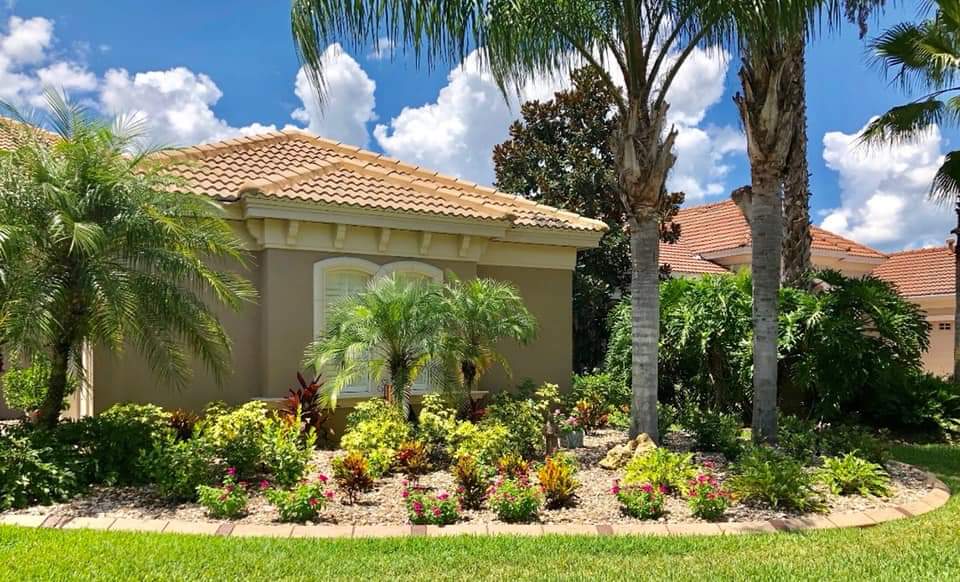Leading Tips for Enhancing Your Yard with Palm Desert Landscaping Ideas
Leading Tips for Enhancing Your Yard with Palm Desert Landscaping Ideas
Blog Article
A Comprehensive Guide to Creating and Implementing Effective Landscape Design Solutions
The art and science of landscaping prolong past simple aesthetics; they involve a thoughtful combination of style concepts, environmental stewardship, and sensible implementation. What approaches can one utilize to make certain these landscapes not only grow yet also prosper in harmony with their surroundings?

Understanding Landscape Layout Principles
One might question what foundational components add to effective landscape design. At its core, effective landscape design depends upon a number of key concepts that direct the arrangement and selection of components within an area. These concepts include unity, proportion, balance, and rhythm, each offering to create an unified outdoor atmosphere.
Unity describes the cohesive partnership among numerous components, making certain that they interact cosmetically and functionally. Balance can be accomplished via asymmetrical or in proportion setups, allowing the landscape to really feel secure and inviting. Percentage entails comprehending the range of elements in connection to each other and the surrounding atmosphere, advertising aesthetic harmony and comfort.

Analyzing Your Outdoor Space
Prior to applying the principles of landscape style, a thorough evaluation of your exterior room is important. This first evaluation helps define the range of your landscape design task and guarantees that your style lines up with the one-of-a-kind characteristics of your residential property. Begin by assessing the dimensions of your space, taking exact dimensions to recognize the available area for various elements such as outdoor patios, yards, and paths.
Following, observe the existing functions of your landscape, including topography, dirt top quality, and drainage patterns. These elements significantly influence plant option and positioning. In addition, examine the sunlight exposure across different areas throughout the day, as this will influence the types of plants that thrive in your garden.
Take into consideration the microclimates developed by frameworks, trees, and other obstacles, as they can influence temperature and wetness levels. Take note of any type of existing plants or hardscape aspects that you desire to retain or get rid of. This detailed evaluation lays the groundwork for a reliable and knowledgeable landscaping remedy, making sure that your design is not just visually pleasing but sustainable and additionally practical for years to find.
Sustainable Landscape Design Techniques
These practices not only advertise ecological equilibrium yet also improve the visual and functional value of a landscape. Carrying out reliable irrigation systems, such as drip irrigation, decreases water waste and guarantees that plants obtain adequate dampness (Palm Desert Landscaping).

An additional effective method is the critical placement of hedges and trees to provide natural windbreaks and color, thus lowering power prices (Palm Desert Landscaping). Rainfall gardens can be integrated right into the landscape layout to manage stormwater overflow properly, filtering pollutants before they get in waterways
Selecting the Right Plant Kingdoms
Picking the right plants for your landscape is essential to accomplishing both aesthetic allure and eco-friendly harmony. The process begins with an understanding of your regional environment, dirt problems, and the specific microenvironments page within your landscape. Evaluating aspects such as sunshine direct exposure, moisture levels, and existing flora will assist you select plants that prosper in your one-of-a-kind setup.
Consider integrating native plants, as they are well-adapted to regional problems, call for much less upkeep, and assistance neighborhood wild animals. In addition, picking a varied array of species can enhance biodiversity while minimizing the danger of condition and parasite break outs. It is vital to evaluate the growth behaviors, growing periods, and seasonal colors of possible plants to develop a natural and dynamic landscape.
Additionally, think of the planned usage of the area; for example, if the area will certainly experience high foot web traffic, go with resilient ground covers. By thoughtfully picking plants that line up with both your environmental demands and aesthetic goals, you can develop a lasting landscape that not only boosts your residential or commercial property but additionally adds positively to the bordering environment.

Implementation and Upkeep Approaches
Once the ideal plants have actually been chosen for your landscape, the focus changes to effective implementation and continuous upkeep strategies. Successful setup starts with correct site preparation, that includes dirt testing to figure out nutrient degrees and pH, followed by amending the soil as needed. Meticulously arrange plants according to their growth practices and light demands, making certain adequate spacing to promote healthy growth.
Irrigation is an essential component of implementation. Establish important site a watering routine that thinks about the certain demands of each plant varieties, readjusting for seasonal adjustments. Utilizing drip irrigation systems can enhance water efficiency and reduce runoff.
Upkeep strategies must be implemented to guarantee the longevity and vitality of your landscape. Regular tasks include weeding, mulching, and trimming to regulate development and stop illness. Fertilization ought to be conducted based on soil examinations, providing the necessary nutrients without over-fertilizing.
Monitoring for conditions and parasites is crucial; early discovery can stop considerable damage. Lastly, seasonal adjustments to upkeep regimens, such as winterizing perennials and preparing for springtime growth, will certainly ensure that your landscape continues to be aesthetically appealing and healthy and balanced year-round.
Conclusion
Successful application and recurring upkeep further guarantee the long life and vitality of landscapes. By integrating these elements, landscapes can be transformed right into beautiful, functional atmospheres that promote biodiversity and add favorably to area well-being.
One may question what fundamental components add to effective landscape style. At its core, successful landscape layout pivots on several essential principles that assist the plan and choice of aspects within an area.Choosing the right plants for your landscape is critical to achieving both aesthetic allure and eco-friendly harmony. It is important to evaluate the growth habits, flowering periods, and seasonal shades of possible plants to create a cohesive and dynamic landscape.
As soon as the best plants have actually been chosen for your landscape, the emphasis changes to efficient execution and ongoing maintenance methods.
Report this page